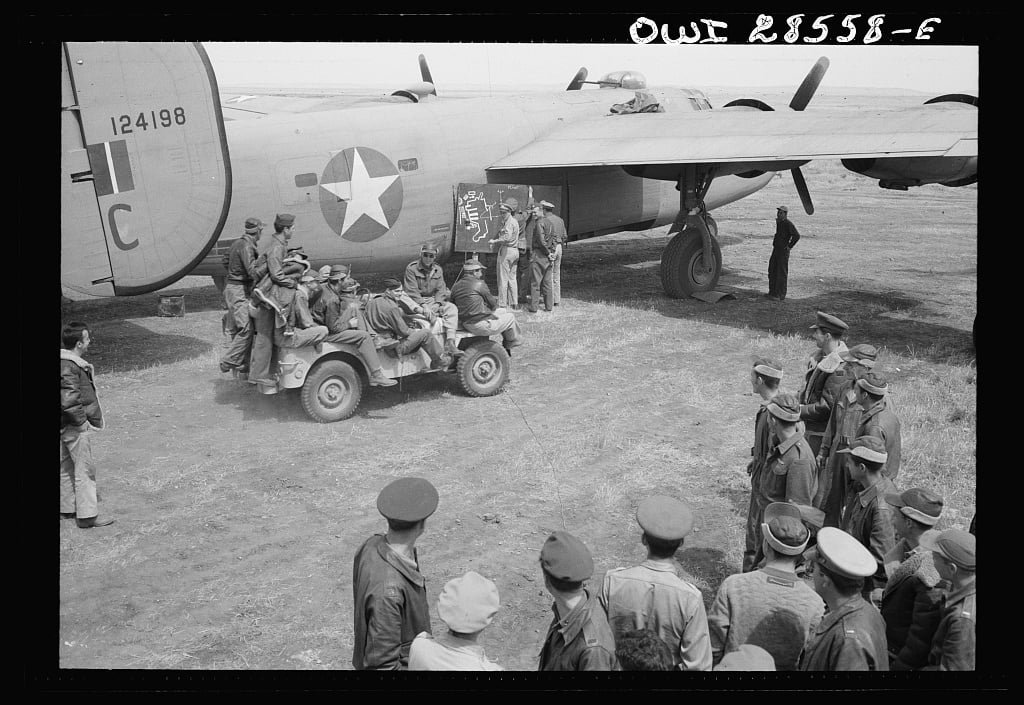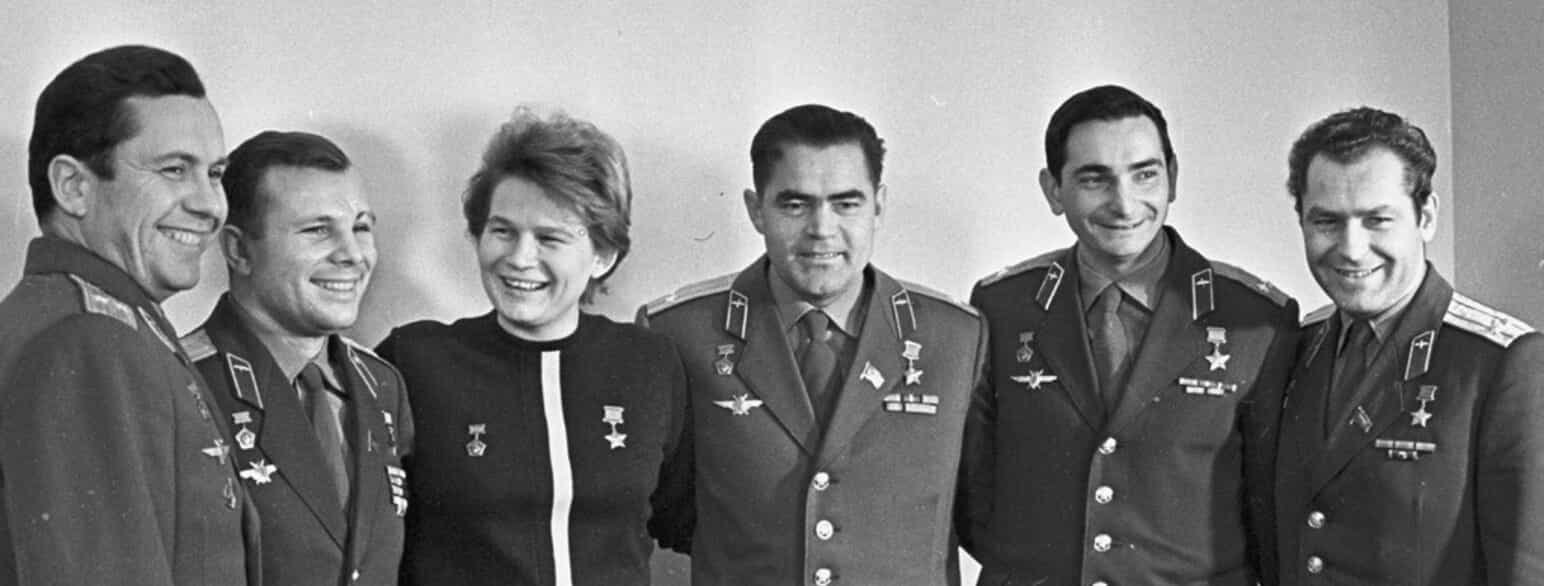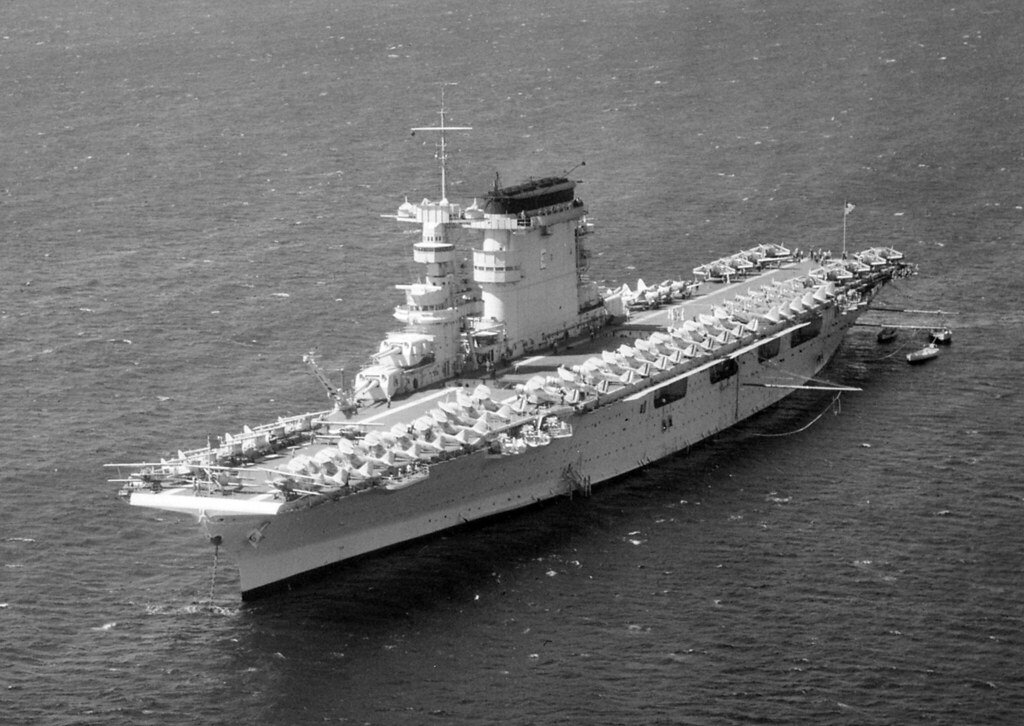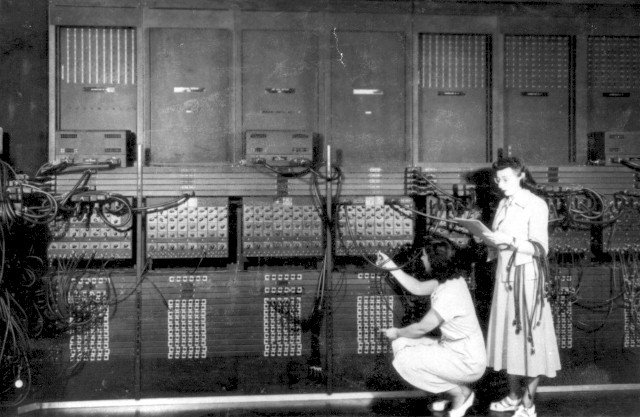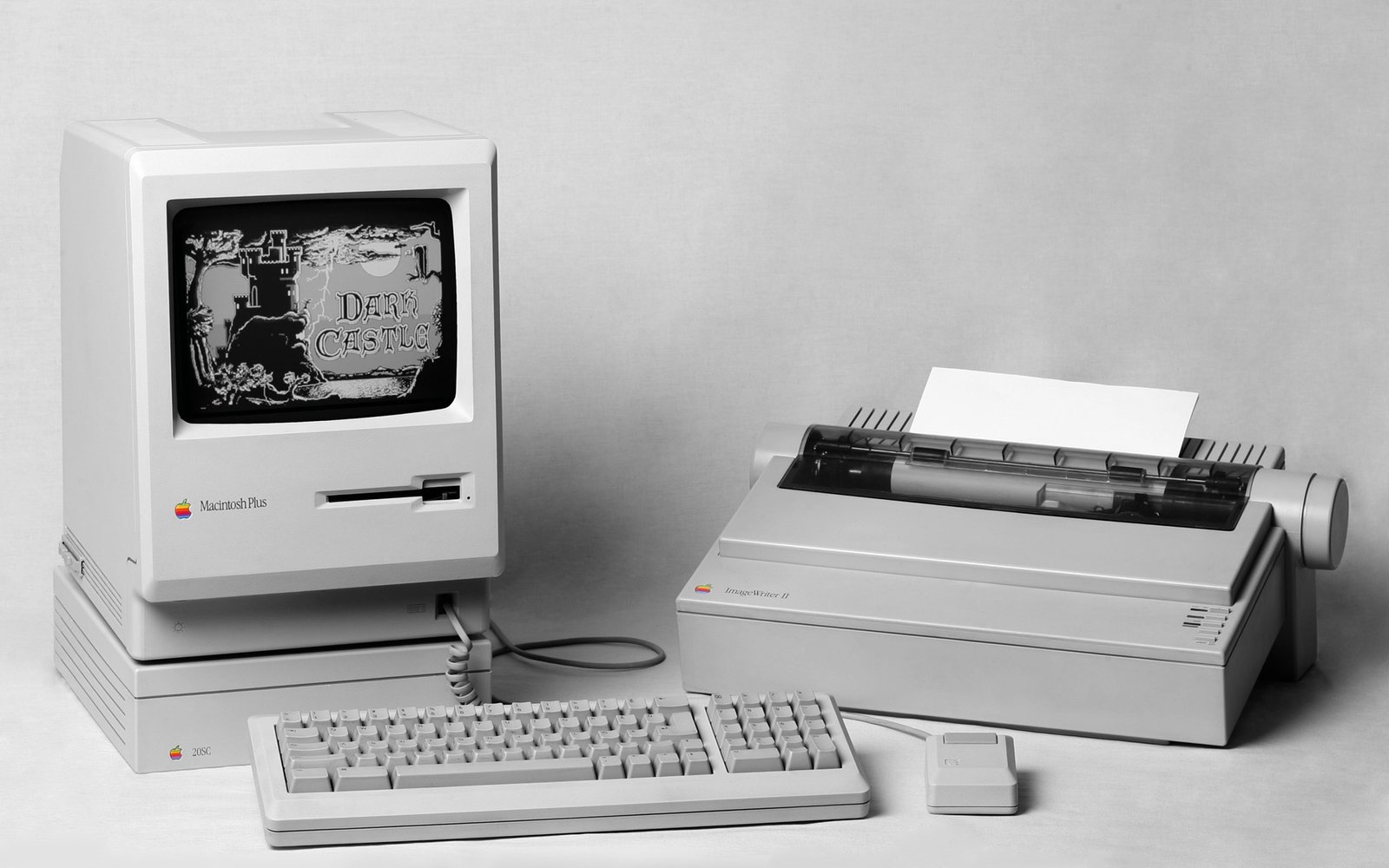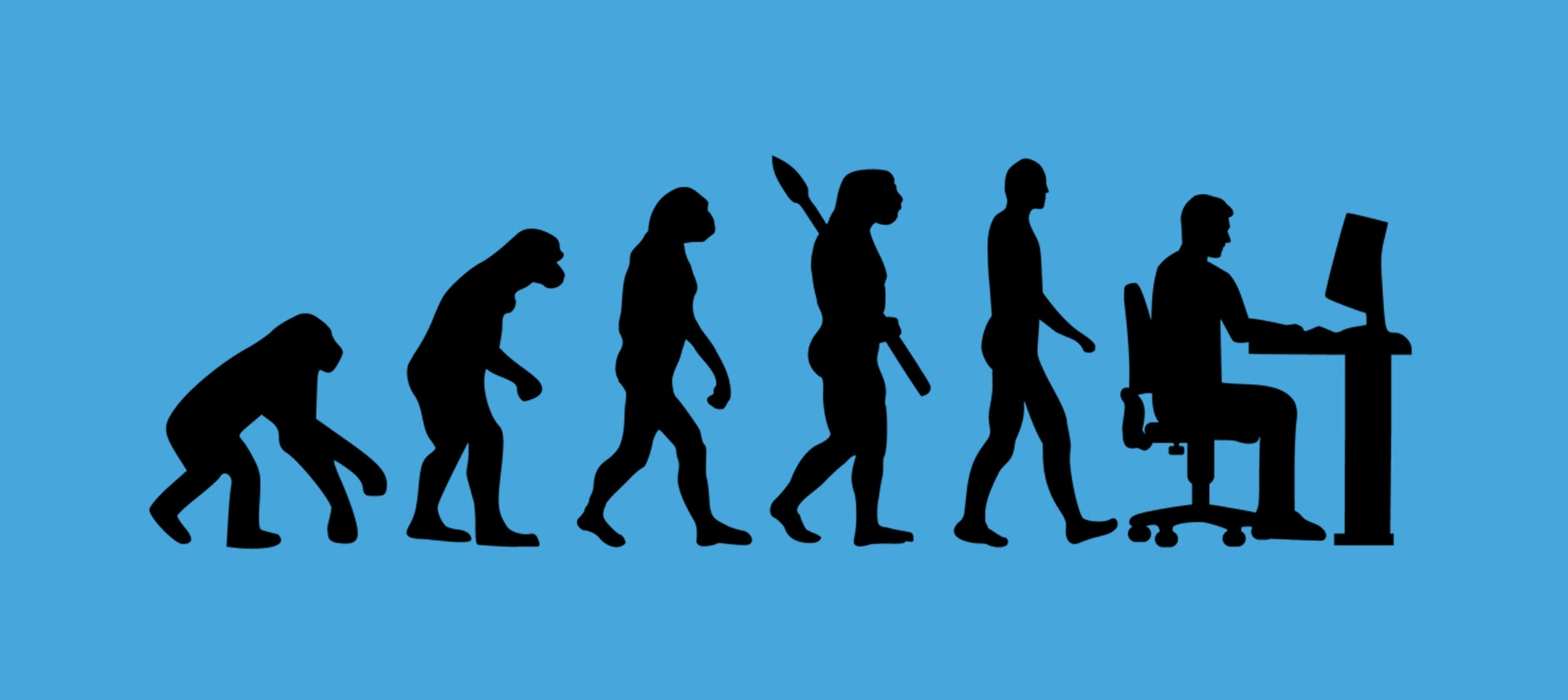Grand Theft Auto – the very name evokes images of high-speed car chases, open-world chaos, and a cultural phenomenon that has defined gaming for decades. What began in 1997 as a humble, top-down crime game full of pixelated mayhem has evolved into a global entertainment powerhouse. In this comprehensive journey through GTA game history, we’ll explore the Grand Theft Auto evolution from its origin at a small Scottish studio to its status as one of the best-selling, most influential video game franchises ever.
Along the way, we’ll witness how GTA III revolutionized the gaming landscape with 3D open-world gameplay, how Rockstar Games took the helm to drive GTA’s success, and how each installment pushed boundaries with innovation and controversy. From Rockstar Games’ GTA breakthroughs like Vice City and San Andreas to the record-shattering success of GTA V and GTA Online, this is the GTA franchise timeline – a story of pixel chaos turned global phenomenon.
Table of Contents
GTA Franchise Timeline: Major Releases at a Glance
To set the stage, here’s a quick timeline of the major Grand Theft Auto releases and milestones over the years:
- 1997 – Grand Theft Auto (GTA 1): The original 2D, top-down crime caper that started it all.
- 1999 – Grand Theft Auto 2: A sequel refining the chaotic formula, and the last of the 2D era.
- 2001 – Grand Theft Auto III: The groundbreaking leap to 3D open-world gameplay in Liberty City.
- 2002 – Grand Theft Auto: Vice City: A vibrant 1980s-themed follow-up set in a Miami-inspired city.
- 2004 – Grand Theft Auto: San Andreas: An expansive, state-wide epic set in the 1990s West Coast.
- 2008 – Grand Theft Auto IV: A new generation HD era entry with gritty realism in Liberty City.
- 2013 – Grand Theft Auto V: A massive open-world game in Los Santos, featuring three protagonists and launching GTA Online.
- 2025 (Expected) – Grand Theft Auto VI: The upcoming highly anticipated next chapter in the series, rumored to return to Vice City and beyond.
Each of these titles built upon its predecessors while setting new standards in gameplay, storytelling, and open-world design. Now, let’s dive deeper into how this franchise grew from a niche project into a worldwide phenomenon.
Origins of GTA (1997): DMA Design and the Birth of a Notorious Classic
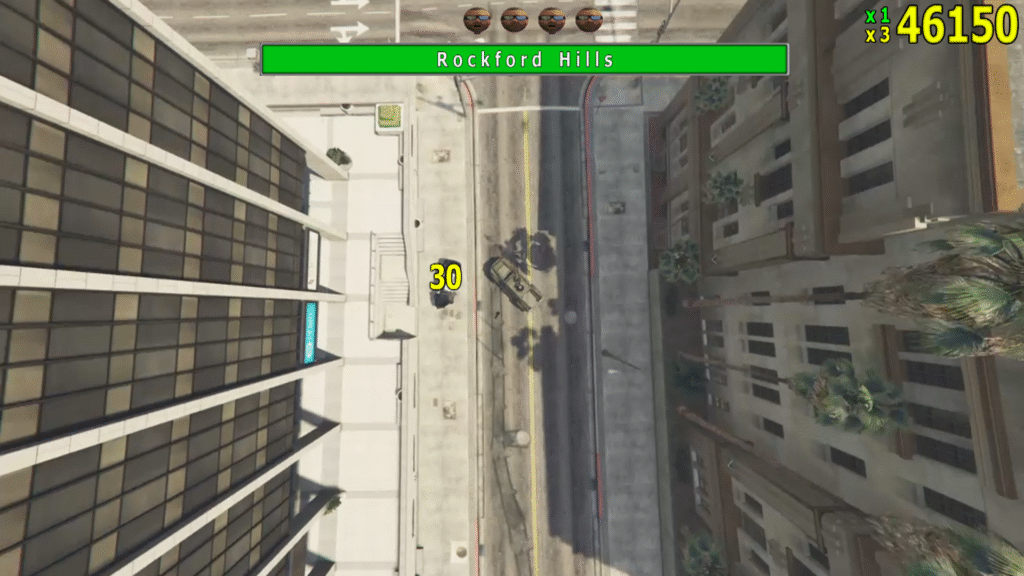
Every legend has an origin story, and Grand Theft Auto’s begins in the mid-1990s in Dundee, Scotland. A small game development studio named DMA Design – founded by David Jones and a handful of friends – was hard at work on an ambitious concept originally titled “Race’n’Chase.” The idea was simple yet exciting: a cops-and-robbers game with open-ended gameplay where players could run rampant in a city. During development, a pivotal realization set the course for the game’s future – “Nobody wants to be the cop; it’s more fun to be bad!” With that shift in mindset, the focus turned to letting players live out a life of crime in a virtual city sandbox.
After a bumpy development cycle (and even a near-cancellation or two), DMA Design’s creation finally hit PCs and PlayStation in October 1997 under a new, fitting name: Grand Theft Auto. This original GTA was a top-down, 2D action game set across three fictional cities (Liberty City, San Andreas, and Vice City) where players took on missions for criminal gangs, stole any car in sight, and caused pixelated chaos at every turn. The graphics were simple and the gameplay was chaotic and over-the-top – think of it as a digital playground of crime where causing mayhem was not just allowed, but encouraged.
The first GTA made headlines right out of the gate. In an era when family-friendly platformers and tame console games dominated, GTA’s content was brazenly controversial. In fact, the developers cleverly courted controversy as a marketing strategy: they hired publicist Max Clifford to stoke media outrage about the game’s violence and crime-focused gameplay. The plan worked like a charm – tabloids and politicians labeled GTA a “murder simulator,” and moral watchdogs were aghast. But all the outrage only fueled public curiosity. Gamers wanted to see what the fuss was about, and many found that Grand Theft Auto delivered a thrillingly unique experience unlike anything else at the time.
Despite (or perhaps because of) the controversy, GTA1 was a commercial success and a cult hit. Players loved the freedom to drive anywhere, wreak havoc, and engage in an open-world crime spree on their own terms. The game’s satirical tone – with its radio station spoofs and dark humor – set the template for the series’ trademark style. Grand Theft Auto had stolen the spotlight, and a sequel was inevitable. Little did anyone know that this scrappy, top-down game was the seed of a gaming revolution.
Grand Theft Auto 2 (1999): Refining the Chaos in the Final 2D Chapter
Following the unexpected success of the original, Grand Theft Auto 2 rolled out in 1999 as the final entry of GTA’s 2D era. Developed again by DMA Design and now published by Rockstar Games (more on Rockstar shortly), GTA 2 built upon its predecessor’s foundation of open-ended crime and mayhem while adding a few new twists. Set in a dystopian “Anywhere City” sometime “three weeks into the future,” the game retained the top-down perspective but featured improved graphics, a day-night cycle, and an eclectic mix of 90s-style electronic music on its radio stations.
In GTA 2, players once again caused havoc across city streets, but this time a key new feature was introduced: gang factions. The city was populated by various gangs (Yakuza, Zaibatsu, bikers, and more), each offering missions to the player. Crucially, these gangs didn’t get along – helping one group could earn you respect with them while angering others. This added a strategic element to the free-form chaos: players had to balance relationships between factions or face relentless attacks from rival gangsters. It was an early attempt at giving the world more reactive depth, hinting at the greater complexity to come in future games.
Grand Theft Auto 2 had a modest impact compared to the seismic shifts the series would later cause, but it was well-received by fans of the original and kept the GTA flame burning. It refined the formula with smoother gameplay and more content, serving as a bridge between the humble 2D origins and the imminent 3D revolution. Importantly, GTA 2 marked the first time the franchise bore the Rockstar Games label as publisher, cementing a partnership that would soon propel GTA to new heights. By the end of the 1990s, the stage was set: technology was advancing, Rockstar was in the driver’s seat, and DMA Design was gearing up for something truly groundbreaking – Grand Theft Auto III.
Rockstar Games Takes the Wheel: From DMA Design to a Global Phenomenon
Before diving into the 3D era, it’s worth highlighting how Rockstar Games became intertwined with GTA’s destiny. In the late 90s, as GTA was gaining notoriety, the business side of things was just as dramatic as the in-game action. Originally, the first Grand Theft Auto was published by BMG Interactive, a division of a music company. But in 1998, Take-Two Interactive (an American game publisher) acquired BMG Interactive and brought on two passionate British gaming entrepreneurs, Sam Houser and Dan Houser, to found a new label: Rockstar Games. The Houser brothers, along with producer Leslie Benzies and others, saw the potential to turn GTA into a blockbuster franchise.
Rockstar Games soon acquired DMA Design as well, folding the Scottish studio into the Rockstar family. By 2002, DMA Design was rechristened Rockstar North, which would remain the primary studio behind the main GTA series. This partnership was the perfect mix of creative talent and marketing savvy. Rockstar’s ethos of creating edgy, cinematic, boundary-pushing games meshed perfectly with GTA’s concept. With Rockstar at the helm (backed by parent company Take-Two Interactive), Grand Theft Auto was poised to evolve from a cult hit into a global phenomenon.
It’s also during this transition that the personality of GTA truly emerged. Rockstar cultivated an image as the “bad boys” of gaming – unafraid of controversy and obsessed with quality and detail. They poured resources into the next GTA project, aiming to harness the power of emerging PlayStation 2 technology. The result of this potent combination of new hardware, a bold vision, and Rockstar’s guidance would be nothing short of revolutionary.
Grand Theft Auto III (2001): The 3D Revolution that Changed Gaming
In October 2001, Grand Theft Auto III was released, and the video game world would never be the same. Often heralded as one of the most revolutionary moments in gaming, GTA III took the series (and the entire open-world genre) into full 3D for the first time. The top-down, sprite-based city streets of the earlier titles were transformed into a living, breathing 3D metropolis that players could explore from street level. Liberty City – a gritty, New York-inspired urban jungle – became the sandbox for an unprecedented level of player freedom and immersion.
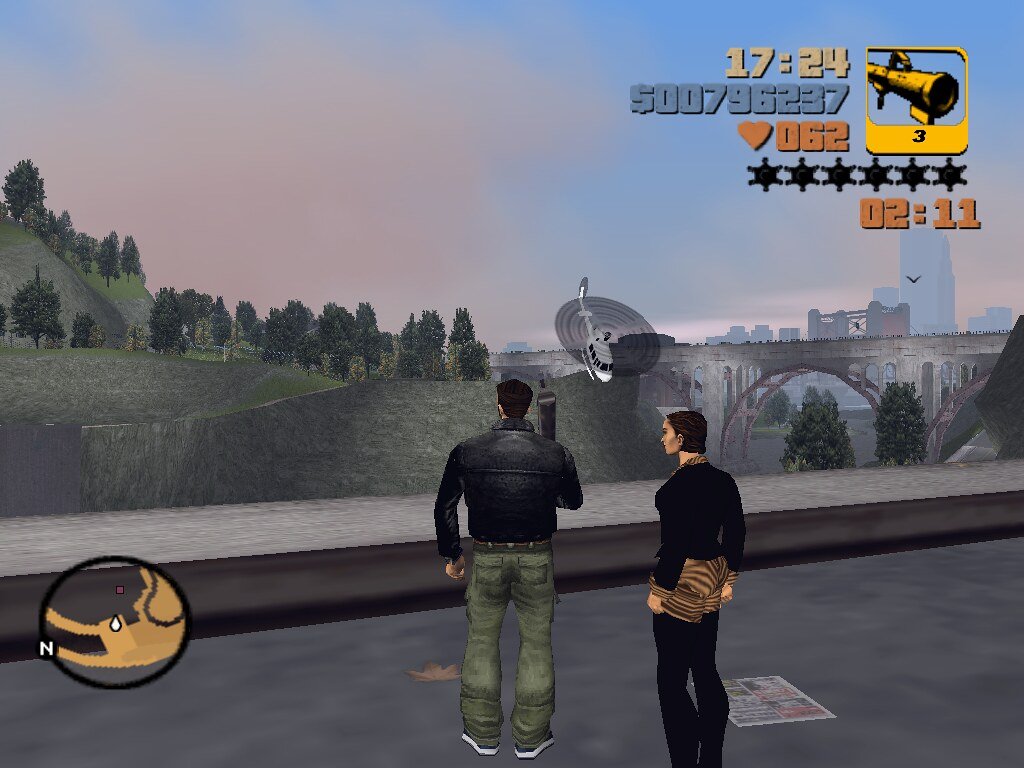
The impact of GTA III was immediate and massive. Here was a game where you could drive anywhere, get out on foot, hijack any vehicle, interact with a city full of pedestrians and criminals, and undertake missions at your leisure – all in a seamlessly streaming world with no level breaks. This was a bold leap ahead of the more rigid, level-based games of the time. Players were in awe of the freedom: one moment you might be following the story, driving to a mission, and the next you could be sidetracked by hours of spontaneous chaos – fleeing from police, finding stunt jumps, or simply listening to the in-game radio while cruising around.
Speaking of radio – GTA III introduced the now-classic radio station system with various genres of music and hilarious fictional talk shows, greatly enhancing the feeling of a real, dynamic city. The game’s narrative was a crime story following a silent protagonist (Claude) betrayed by his girlfriend and left for dead, then working his way up the criminal underworld. For the first time, GTA had a cinematic storyline with voice-acted characters (including memorable figures like mob boss Salvatore Leone and corrupt cop Ray Machowski). It was like a blockbuster crime film that the player got to star in.
The revolution wasn’t just technical; it was cultural. Grand Theft Auto III became a lightning rod in the ongoing debate about video game violence. With its move to 3D realism, the outrage from media and politicians grew even louder than before.
The game was released just weeks after the 9/11 tragedy, and some critics argued that its depiction of urban crime was in poor taste or potentially harmful (Australia even briefly banned GTA III until a modified version was released). But controversy did nothing to stop GTA III’s ascent. The game earned widespread critical acclaim (many outlets gave it Game of the Year honors) and sold millions of copies, becoming one of the best-selling PS2 games of all time.
Most importantly, GTA III revolutionized game design. It popularized the concept of the “open-world sandbox” in modern gaming; soon, many other developers were crafting their own “GTA-like” titles, and the term “GTA clone” entered the lexicon. From Saints Row to True Crime and countless others, the influence of GTA III was everywhere.
Even beyond the crime genre, the idea that a game could offer a sprawling, non-linear world with a mix of story and free-form play became a new standard. Today’s big open-world games owe a huge debt to what GTA III achieved back in 2001. It’s no exaggeration to say that Grand Theft Auto III was a turning point in video game history – the moment the series truly went from pixel chaos to global phenomenon.
Grand Theft Auto: Vice City (2002) – 1980s Flair and New Heights of Popularity
How do you follow up a genre-defining hit like GTA III? Rockstar’s answer was Grand Theft Auto: Vice City, released just one year later in 2002. Instead of resting on their laurels, the developers used GTA III’s engine and framework as a springboard to create an even more stylized and story-rich experience. Vice City took players to a brand-new setting: a neon-soaked coastal metropolis inspired by 1980s Miami. The game oozed 1980s flair, from the loud shirts and fast cars to one of the best soundtracks in gaming history – a collection of iconic ’80s music hits that instantly set the mood as you cruised past palm trees and beachside hotels.
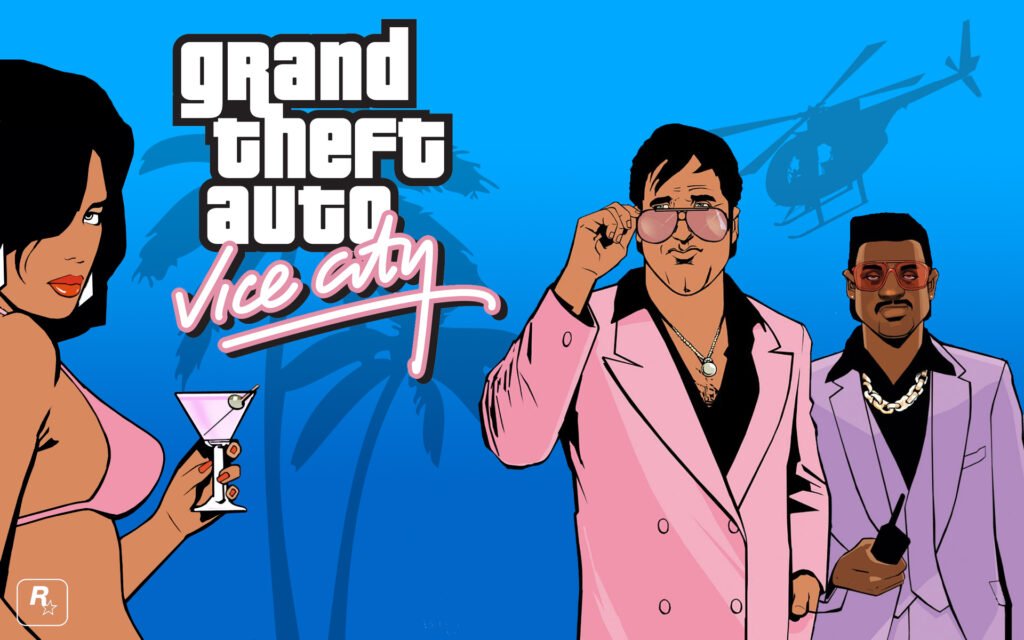
In Vice City, for the first time in the series, the player-character had a voice and a strong personality. You play as Tommy Vercetti (voiced by the late Ray Liotta), a tough-talking gangster fresh out of prison who finds himself navigating the drug-fueled underworld of Vice City. The storyline pays homage to classic mob and crime films – you’ll catch Scarface and Miami Vice influences throughout – as Tommy rises from errand boy to criminal kingpin, seizing power and property across the city. This installment introduced the ability to purchase businesses and properties, which not only made you money but also unlocked new missions. It gave players a sense of building an empire, on top of the usual missions and chaos.
Grand Theft Auto: Vice City was a massive hit, elevating GTA’s popularity to new heights. Critically, it garnered praise for its vibrant setting, memorable characters, and music. Commercially, it broke records – Vice City became the fastest-selling PlayStation 2 title ever at the time of its release. In the United States alone, millions of gamers were eagerly awaiting it: the game reportedly had over 4 million pre-orders, and within just the first 48 hours on sale it sold around half a million copies, eventually going on to sell over 17 million copies on PS2 (eclipsing even GTA III’s success). Its popularity proved that GTA III was no fluke; players were hungry for more of this open-world crime saga.
Of course, controversy followed Vice City as well. The game’s depiction of gang violence drew criticism from some Cuban and Haitian community groups in the U.S., who objected to how their communities were portrayed in the story. This led Rockstar to make some edits in later releases to tone down offensive references – a rare instance of the developers actually altering content in response to public outcry.
In Australia, the game had to be slightly censored (as had GTA III) to meet ratings standards. But ultimately, the controversies did little to dampen enthusiasm. Vice City firmly established Grand Theft Auto as a household name and a cultural touchstone of the early 2000s. With its nostalgic music, unforgettable 80s vibe, and expanded gameplay, many fans still regard Vice City as one of the high points of the series.
Grand Theft Auto: San Andreas (2004) – A Gangster Epic in a Massive Open World
Rockstar North’s next move was perhaps its boldest: Grand Theft Auto: San Andreas, released in 2004, was an attempt to outdo everything that came before by sheer scale and ambition. Set in the early 1990s, San Andreas didn’t just give players a city – it offered an entire state to explore.
The game’s map is an expansive fictional state called San Andreas, heavily based on California and Nevada, complete with three distinct cities (Los Santos – inspired by Los Angeles, San Fierro – a stand-in for San Francisco, and Las Venturas – a riff on Las Vegas) plus vast rural areas, deserts, forests, mountains, and small towns in between. For the time, the size and variety of San Andreas’ open world was staggering – it truly felt like an entire world packed onto a PlayStation 2 disc.
In GTA: San Andreas, you step into the shoes of Carl “CJ” Johnson, a young man who returns home to Los Santos after five years, only to find his old gang (the Grove Street Families) in shambles and his family in trouble. What unfolds is an epic crime saga that spans the state: CJ gets caught up in gang turf wars in Los Santos echoing the real-life 1990s West Coast gang culture (with clear nods to movies like Boyz n the Hood), then ventures to the Bay Area-esque San Fierro and the casino strip of Las Venturas, all while getting entangled with corrupt cops, rival gangs, and government agents.
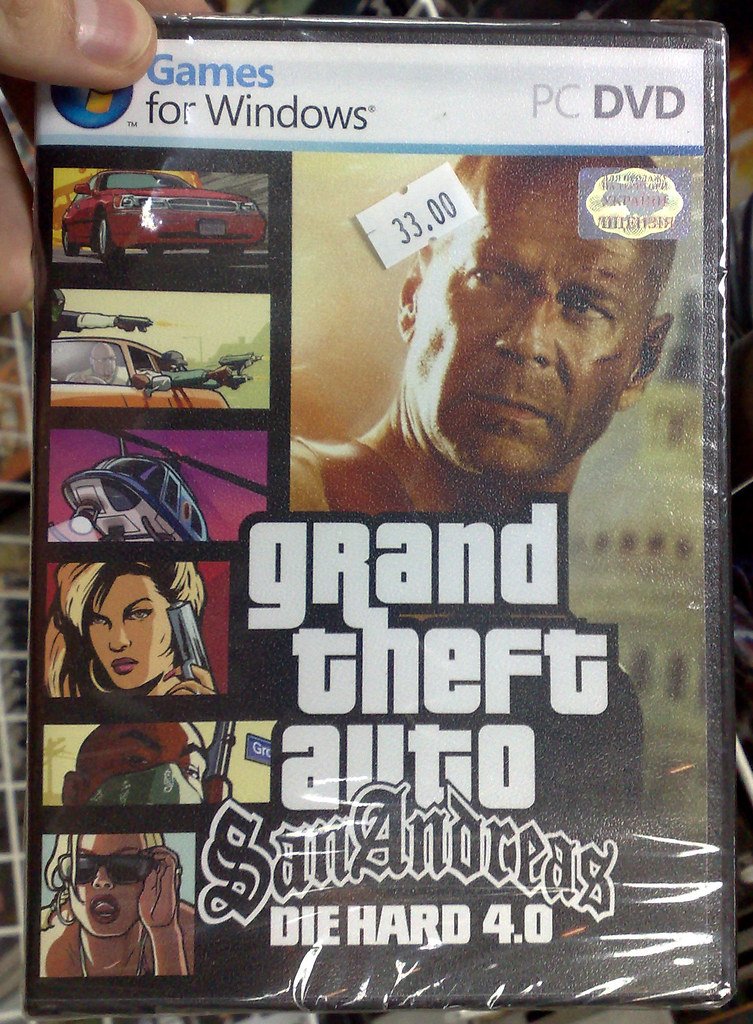
The storyline is rich and sprawling, featuring a memorable cast of characters (including fan-favorite comedic sidekick OG Loc and the menacing Officer Tenpenny, voiced by Samuel L. Jackson).
Beyond the story, San Andreas introduced RPG-like elements and an unprecedented level of player customization. For the first time, players could not only change outfits and hairstyles, but also hit the gym to buff CJ’s muscles or visit fast-food joints to make him fat. You had to eat to maintain stamina, and you could develop skills in weapons and driving.
San Andreas also added a ton of side activities that made the world feel alive: you could play basketball, gamble in casinos, go dancing at clubs, perform burglaries at night, customize cars with mods, and even pilot a variety of aircraft (from stunt planes to jumbo jets). The inclusion of bicycles, parachuting, and underwater swimming showed just how feature-packed the game was. It was as if Rockstar threw every idea they had into one game – and somehow, it all worked together.
The result? Grand Theft Auto: San Andreas became legendary. Critics lauded its scope, soundtrack (featuring a trove of early 90s hits across rap, rock, and pop stations), and the freedom it afforded players. On the sales front, San Andreas smashed records yet again – it quickly became the best-selling PlayStation 2 game of all time, and by some estimates, over 27 million copies were sold worldwide across platforms. Fans were enthralled by the sheer amount of content and the nostalgic recreation of a 90s vibe, from the sound of N.W.A on the radio to the sight of the Vinewood sign on the hills.
However, San Andreas also gave birth to the biggest controversy the series had seen so far: the notorious “Hot Coffee” incident. Hidden in the game’s code was an unfinished mini-game that, if unlocked via mods, allowed players to engage in a sexually explicit interactive scene. When this content was discovered and publicized in 2005, it caused a firestorm. Politicians and media watchdogs pounced on Rockstar.
The game’s ESRB rating was temporarily bumped up to Adults Only, retailers pulled it from shelves, and Rockstar had to release a new version without the hidden content. Lawsuits followed (including a class-action suit and fines for Take-Two Interactive), and it fueled political efforts in the U.S. to regulate violent games more strictly (even U.S. senators like Hillary Clinton weighed in against GTA’s excesses). Despite the turmoil, GTA’s popularity emerged unscathed – if anything, the phrase “Hot Coffee” became an infamous part of gaming lore, and San Andreas continued to be loved by its fanbase.
By the mid-2000s, the first Grand Theft Auto trilogy (III, Vice City, San Andreas) had turned the series into a juggernaut. These games weren’t just best-sellers; they had become ingrained in pop culture. GTA was referenced in songs, TV shows, and movies. Everyone, gamer or not, seemed to know what Grand Theft Auto was – often as the go-to example in debates about video game content, but also as a shining example of gaming’s potential to create rich, interactive worlds. The series had pushed the boundaries of game design and stirred plenty of debate. Now, with new console technology on the horizon, Rockstar prepared to raise the bar yet again.
GTA Enters the HD Era: Grand Theft Auto IV (2008) and a Bold New Realism
After the blockbuster success of the PS2-era GTA games, Rockstar North spent a few years building the next chapter of the franchise for the new generation of hardware (the Xbox 360, PlayStation 3, and modern PCs). In April 2008, Grand Theft Auto IV arrived, bringing the series into the high-definition era with a bang. GTA IV was essentially a reboot of the setting, returning players to Liberty City – but this was not the same Liberty City from GTA III.
Reimagined from scratch, GTA IV’s Liberty City was an incredibly detailed, realistic take on New York City, complete with faux versions of four boroughs (Broker for Brooklyn, Algonquin for Manhattan, Dukes for Queens, and Bohan for the Bronx) and even a portion of New Jersey (Alderney). The goal was clear: realism and depth unlike anything before in a GTA game.
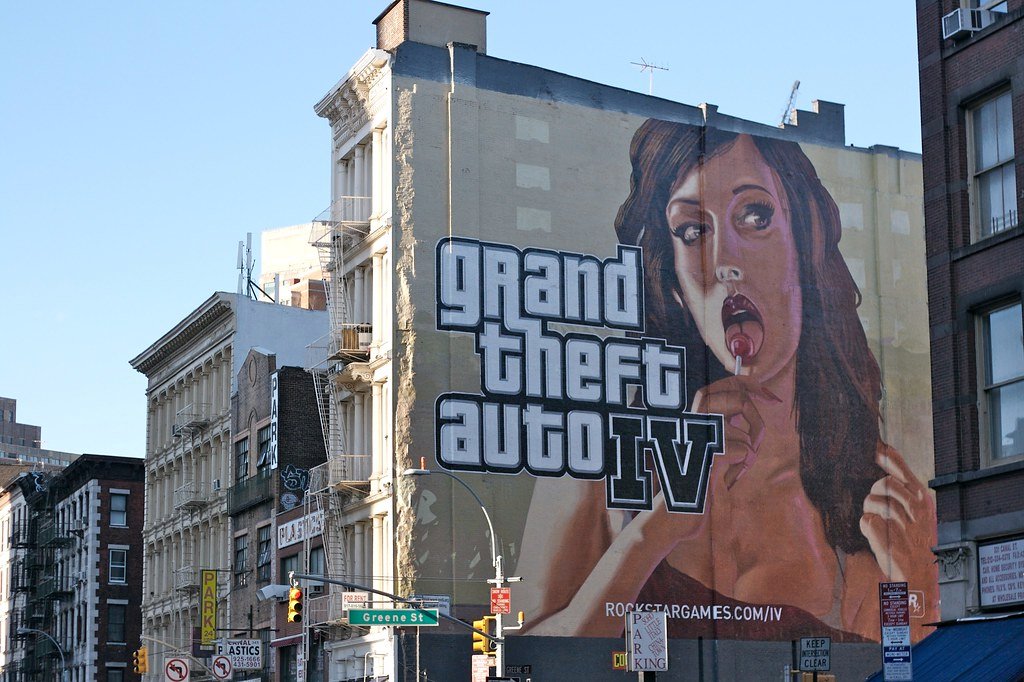
In GTA IV, players follow the story of Niko Bellic, an Eastern European immigrant and war veteran who arrives in Liberty City looking for a fresh start and the “American Dream,” only to be swiftly pulled into the criminal underworld. The narrative tone of GTA IV was notably more mature and gritty than its predecessors – it felt like an HBO crime drama with a dark sense of humor. Niko’s personal story of revenge and the immigrant experience, along with a cast of complex characters (like your cousin Roman, who just wants to go bowling, and various underworld figures), earned praise for elevating GTA’s storytelling to new heights.
Technically, Grand Theft Auto IV was a major leap. It debuted Rockstar’s advanced new game engine (RAGE) combined with the Euphoria physics engine, which meant the city and character behaviors were more realistic than ever. Shootouts, car handling, and even how pedestrians stumbled or cars crumpled in collisions all felt more grounded. For the first time in the series, players could even experience the game in a limited first-person perspective (for instance, aiming weapons or peering around car interiors), adding to the immersion.
The level of detail in Liberty City was astounding – from the skyline down to the individual comedians performing in the game’s comedy clubs (yes, you could actually take Niko to a stand-up comedy show and watch routines by real comedians!). The in-game internet, cabaret shows, TV programs, and massive amounts of dialogue all contributed to a city that felt alive.
GTA IV was also the first main entry to introduce online multiplayer as an integrated feature. Up to 16 players (or 32 on PC) could free-roam the city together or engage in various game modes like races, deathmatches, and co-op missions. This was a significant step, laying the groundwork for the even more ambitious online plans Rockstar had for the future.
The reaction to Grand Theft Auto IV was overwhelmingly positive. Critics hailed it as a masterpiece for its storytelling, world design, and technical achievement – it became one of the highest-rated games of its era (it garnered near-perfect scores and numerous Game of the Year awards). On the commercial side, GTA IV had one of the biggest launches in entertainment history at the time: it sold around 3.6 million copies in the first day and about 6 million in the first week, grossing roughly $500 million in that week alone. Those numbers were record-breaking in 2008, underscoring how huge the franchise had become.
Of course, GTA IV wasn’t free from controversy either. Prior to release, it was targeted by the infamous anti-game attorney Jack Thompson, who tried to block it (unsuccessfully) for fear it would incite violence. Organizations like Mothers Against Drunk Driving (MADD) criticized the game for allowing players to drive drunk (a possible in-game event if Niko had one too many drinks – the screen would blur and controls get wobbly).
Despite these complaints, GTA IV was released mostly intact (with a minor censorship in some countries) and went on to delight millions of players. Its two episodic expansion packs – The Lost and Damned and The Ballad of Gay Tony (released in 2009) – added even more depth to Liberty City, letting players experience new storylines that intertwined with the main tale.
GTA IV’s legacy is significant. It proved that GTA could tackle more serious themes and still keep players entertained, and it set new standards for open-world detail and physics. Many fans spent countless hours just exploring Liberty City, marveling at its realism, or causing chaos and seeing how the game’s advanced engine reacted. But as successful as GTA IV was, it would soon be overshadowed by a game that took the franchise to stratospheric new heights – Grand Theft Auto V.
Grand Theft Auto V (2013): A Record-Breaking Phenomenon and the Launch of GTA Online
By 2013, anticipation for the next GTA had reached a fever pitch. Rockstar Games did not disappoint: Grand Theft Auto V, released in September 2013, was a landmark not just for the series, but for the entire entertainment industry. If previous GTAs were hits, GTA V was a mega-blockbuster. It’s hard to overstate how massive this game’s impact was – from sales and cultural influence to its revolutionary approach in design.
Set in the sun-soaked, fictional state of San Andreas (like 2004’s GTA: San Andreas, but reimagined for the HD era), GTA V focuses on the city of Los Santos and its surrounding areas. Los Santos is basically Rockstar’s take on modern Los Angeles and Southern California, and the world is an absolute marvel: a huge, open landscape that includes a dense city, sprawling suburbs, high-speed freeways, rural Blaine County desert areas, forests, mountains, and even an explorable ocean floor off the coast. The map was (and remains) one of the largest and most detailed open worlds in gaming, truly capturing the look and feel of Southern California’s diversity – from urban skyscrapers to dirt roads and picturesque hills.
For the first time in GTA history, Grand Theft Auto V features three playable protagonists, and the game lets you switch between them almost at will. This innovative design meant the story could be told from three perspectives, often intersecting: Michael De Santa is a retired bank robber living a dysfunctional life in luxury, Franklin Clinton is a hungry young street hustler looking for real opportunities, and Trevor Philips is a volatile career criminal and Michael’s unhinged former partner. The three characters team up for a series of epic heists, and players can swap between them even in mid-mission, experiencing action set-pieces from multiple angles.
This character-switching mechanism was widely praised as a breath of fresh air, keeping the gameplay varied and the narrative dynamic. It also allowed for an ensemble story that satirized different facets of American life: Michael’s storyline skewers Hollywood and mid-life crises, Franklin’s touches on gang culture and the pursuit of upward mobility, and Trevor’s… well, Trevor’s just a chaotic tour de force showcasing the lunacy lurking in the fringes of society.
GTA V was built on all the lessons Rockstar learned over the years, resulting in a game that excelled in virtually every area: a gripping story packed with dark humor and satire, an astonishingly lifelike open world brimming with activities (from tennis and golf to stock trading and side missions), and gameplay that combined driving, shooting, and exploration more seamlessly than ever.
Technically, it was another leap forward – the visuals were stunning for the console generation, and the little details (like dynamic weather, wildlife in the hills, or the way each character had unique animations and hobbies) made the world feel truly alive. The game even included a first-person mode in later releases, letting players experience Los Santos through the eyes of their characters for the first time, which added a new dimension of immersion (this mode became available when GTA V was brought to PS4, Xbox One, and PC in the following years).
On the commercial side, Grand Theft Auto V broke every record in the book. It had (and still has) the most successful entertainment launch in history: within 24 hours of release, GTA V generated over $800 million in revenue, and in just three days it hit the $1 billion mark – faster than any movie, album, or game ever had at the time.
To date, GTA V has sold hundreds of millions of copies (crossing 190 million by 2023 and still climbing, making it the second best-selling video game of all time, only behind Minecraft). It’s clear that GTA V wasn’t just a game release; it was a global cultural event. Gamers lined up at midnight launches, the game dominated news cycles, and its characters and catchphrases seeped into pop culture.

Critically, GTA V received universal acclaim. Reviewers praised its vast scope, the ambitious triple-protagonist story, the refined gameplay, and the satirical portrayal of modern society (everything from tech culture and social media to government agencies get lampooned). It won countless Game of the Year awards in 2013. Beyond the accolades and sales, GTA V’s longevity has been extraordinary – and a huge part of that enduring success comes from its online component, which launched shortly after the main game.
GTA Online: The Multiplayer Revolution and Ongoing Success
Included with GTA V (and now a massive entity of its own) is Grand Theft Auto Online, the series’ dedicated online multiplayer experience. Launched in October 2013, GTA Online started as a somewhat separate mode where players could create their own character and explore the GTA V world with friends and strangers, completing missions and activities together. In the beginning, it offered cooperative jobs and competitive matches in Los Santos. But what it has evolved into over the years is nothing short of a multiplayer empire and a financial juggernaut for Rockstar.
GTA Online is set in the same Los Santos and Blaine County map, but with a twist: it’s a continually evolving world that Rockstar has expanded with regular updates and new content since launch. In GTA Online, you can team up with others to pull off elaborate heists, engage in street races, start a motorcycle club or a criminal enterprise, compete in imaginative adversary modes, or just roam the city causing chaos.
Updates have introduced new heists (some with high-stakes plots like robbing a casino or a secret government lab), businesses to run (like nightclubs, arms dealing operations, or even a bunker for manufacturing illegal goods), and a huge array of vehicles (from hypercars to flying bikes and even jetpacks). One update even added an entirely new area to explore – the tropical island of Cayo Perico – as part of a heist mission. The freedom and variety in GTA Online are staggering; it basically became a giant playground where the only limit is the player’s imagination (and maybe their in-game bank account).
From a financial perspective, GTA Online’s success has been phenomenal. The mode is free to anyone who owns GTA V, and Rockstar makes money through optional in-game purchases (players can buy in-game currency, “Shark Cards,” with real money to spend on cars, properties, weapons, and more). This model, combined with the steady stream of new content, has kept players engaged for years.
GTA Online helped GTA V remain one of the top-selling games every single year well beyond its 2013 launch. By 2020, it was estimated that GTA V (thanks largely to online) had generated over $6 billion in revenue, making it one of the highest-grossing entertainment products of all time. In fact, GTA Online was so lucrative that it influenced Rockstar’s approach to game development – the company continued to focus on supporting GTA Online with new expansions rather than rushing out a sequel.
From racing circuits and player-created stunt courses to role-playing servers where players impersonate cops, criminals, or even fast-food workers, the community aspect of GTA Online has also been a big part of its cultural impact. It’s a constantly evolving social world as much as a game, one that keeps the Grand Theft Auto name in headlines and on streaming platforms like Twitch and YouTube, where people broadcast their adventures or crazy modded scenarios. GTA Online’s longevity has effectively extended the life of GTA V to span three console generations (released on PS3/Xbox 360, then re-released on PS4/Xbox One, and again on PS5/Xbox Series X|S with upgrades).
It’s worth noting that the success of GTA Online did come with some criticisms: a portion of players lamented that the focus on the online mode meant a lack of single-player DLC akin to GTA IV’s episodes (Rockstar had initially hinted at story DLC for GTA V but later shelved those plans). Additionally, some have criticized GTA Online’s monetization and the grindy nature of earning money in-game (pushing players towards buying Shark Cards). Nevertheless, GTA Online’s popularity is undeniable – it has kept tens of millions of players engaged and has set an example for how open-world games can transition into long-term service-based experiences.
By combining an incredibly strong single-player game (GTA V) with an ever-growing multiplayer world (GTA Online), Rockstar found a winning formula that has made the Grand Theft Auto franchise more globally popular than ever in the 2010s and early 2020s. At this point, GTA was not just a game or a series – it was a cultural phenomenon, a staple of modern entertainment with a fanbase spanning the globe.
Controversies and Criticisms: The Dark Cloud Behind the Silver Lining
Throughout its history, the Grand Theft Auto series has often been as notorious as it is celebrated. GTA controversy is almost a redundant phrase at this point – since day one, each installment of the franchise has attracted its share of criticism, moral panic, and even legal challenges. It’s a testament to GTA’s prominence (and provocative content) that it has been in the crosshairs of politicians, parent groups, and media watchdogs for over two decades. Let’s take a look at some of the major controversies that have punctuated GTA’s timeline:
- Early Outrage (GTA 1 and 2): As mentioned, the original Grand Theft Auto (1997) was deliberately marketed as an outrageously violent game to spark media coverage. The stunt succeeded, branding GTA as the poster child for “video game violence” in the late ’90s. British and American tabloids expressed alarm over the ability to run over pedestrians and commit crimes in the game’s crude 2D world. This early infamy laid the groundwork for GTA’s rebel reputation. GTA 2 kept a lower profile but still carried the stigma – it was rated for adults and included in debates about violent media.
- GTA III (2001) – A New Level of Concern: Transitioning to 3D with GTA III amplified the controversy. Now the violence and crime were rendered in more lifelike detail. The game faced criticism for allowing players to engage in activities like soliciting a prostitute and then harming her to get money back, which many found deeply offensive. The timing of GTA III’s release (shortly after the September 11 attacks) also made some critics uneasy about its depiction of urban violence. Australia’s ban (later lifted after edits) and public complaints elsewhere solidified GTA III’s place as a central figure in the debate on video game content. Still, all the outcry seemed only to fuel the game’s mystique and sales.
- Vice City (2002) – Cultural and Racial Backlash: With GTA: Vice City, Rockstar faced specific criticisms from Cuban and Haitian American groups. In one mission, the game originally included lines that encouraged violence against Haitian gang members, which understandably caused an uproar in the Haitian community of Miami. Under pressure, Rockstar removed or changed the phrasing in later copies, a notable instance of the developers conceding to public criticism. Vice City also continued to be scrutinized for general violence and sexual content, with some countries requiring minor censorship (e.g., again, the Australian version toned down some violence).
- San Andreas (2004) – Hot Coffee Scandal: The “Hot Coffee” incident stands as perhaps the most infamous GTA controversy. The discovery of the hidden sexually explicit mini-game in GTA: San Andreas led to a media firestorm. The idea that players (or rather, modders) could unlock a graphic sex mini-game in GTA sent shockwaves through the industry. It prompted a rare Adults Only rating from the ESRB until the game was recalled and reissued without the content. Lawsuits were filed, politicians used it as an example to call for stricter game regulation, and Rockstar had to pay fines and settlements. The Hot Coffee fiasco became a turning point that even the industry’s ratings process had to reckon with. Ironically, it also made “San Andreas” a household name in many non-gaming circles – everyone was talking about this controversial game.
- The Jack Thompson Crusade: Attorney Jack Thompson became a notable figure in the mid-2000s as an aggressive critic of violent video games, with GTA as his prime target. He blamed games like GTA for real-life incidents of violence and tried multiple lawsuits to get the games restricted or banned. He even attempted to block the sale of GTA IV in 2008. Ultimately, his lawsuits were unsuccessful and he was disbarred in 2008 for professional misconduct. However, his high-profile campaigns kept GTA in the spotlight of controversy and arguably spurred the industry and gamers to push back in defense of artistic freedom in games.
- GTA IV (2008) – Drunk Driving and More: With Grand Theft Auto IV, one particularly controversial feature was the ability for Niko to drink alcohol and then drive (with impaired controls). Organizations like MADD were outraged, saying the game trivialized drunk driving. GTA IV also faced a temporary ban in Thailand after a tragic incident where a teenager claimed to have been influenced by the game – an example of how authorities have occasionally linked real-life violence to GTA (though such links are widely disputed by research). Still, aside from these issues, GTA IV’s controversies were relatively mild compared to others.
- GTA V (2013) – Torture Scene and Other Critiques: Leave it to Rockstar to push buttons. In Grand Theft Auto V, one mission caused a stir: the player, as Trevor, must torture a man for information using various methods (waterboarding, electrocution, etc.). This interactive torture scene drew heavy criticism from some reviewers and activists who felt it was a step too far in forcing players to commit egregious violence. Rockstar defended it as social commentary on torture (the scene satirically depicts how torture is ineffective for getting reliable info), but it remained a subject of debate. GTA V also reignited discussions about misogyny and representation – the game has three male protagonists and some felt it sidelined female characters or relied on stereotypes. Additionally, the online mode’s microtransactions (letting players buy in-game currency) sparked the term “pay-to-win” complaints, though this was more a community gripe than a public controversy.
Through all these storms, Grand Theft Auto has remained incredibly resilient. In fact, one might argue that controversy became part of the brand’s identity – “there’s no such thing as bad press,” as the saying goes. The constant debates and media attention kept GTA in the public consciousness and may have even bolstered its appeal to some players as the forbidden fruit of gaming.
Rockstar’s stance has typically been to weather the criticism and rarely compromise their creative vision (barring a few censorship edits or removals under legal duress). Over time, as gaming has become more mainstream and generations of players have grown up with GTA, the controversies have somewhat tempered. Grand Theft Auto is now often defended as a work of satire and a mature-rated product intended for adults, much like an R-rated movie, rather than something inherently harmful.
That said, each new release still comes with watchful eyes – and the series’ legacy of pushing boundaries suggests that future GTAs will find new ways to spark discussion (and possibly outrage). The controversies, while a “dark cloud” in some respects, have undeniably played a role in GTA’s cultural impact by prompting conversations about violence, free expression, and the role of video games in society.
Cultural Impact and Innovations: How GTA Shaped Gaming and Pop Culture
Beyond the scandals and headlines, the cultural impact of the Grand Theft Auto series is profound. Few game franchises have left as deep a mark on both the gaming industry and popular culture at large. Grand Theft Auto didn’t just reflect the world in its satirical mirror; it also influenced it. Here are some key ways GTA has made its presence felt:
1. Defining the Open-World Genre: Perhaps GTA’s greatest legacy in gaming is how it popularized the open-world or sandbox genre. While it wasn’t the first to have a free-roaming design, GTA III in particular set a template that countless games would follow. The concept of a “GTA-like” game – one with a big map, mix of driving and on-foot action, a variety of missions and side activities, and an overarching crime story – became ubiquitous.
Series like Saints Row, Sleeping Dogs, Mafia, True Crime, and many others were clearly inspired by GTA’s formula. Even beyond urban crime games, elements of GTA’s design (like non-linear mission structure or the importance of player freedom) can be seen in a wide array of modern titles. Open-world games are now a staple of the industry, from Assassin’s Creed to The Witcher, and GTA’s early innovations played a huge part in that trend.
2. Pushing Technological and Narrative Boundaries: Each GTA installment has been known for technical innovations or ambitious new features that later became industry standards. GTA III’s fully 3D city was a technological marvel in 2001. San Andreas’ enormous map and introduction of RPG elements showed games could be complex and still widely appealing. GTA IV’s physics and detailed simulation of a living city raised the bar for realism. GTA V’s multi-protagonist storytelling was an innovative narrative technique that few games have attempted on such a scale. Additionally, GTA V’s seamless character switching and its integration of a massive online mode with the single-player world prefigured a lot of the connected experiences we see in games today.
Rockstar’s penchant for detail – whether it’s the satirical radio content, the hundreds of in-game fictional brands and products, or the way pedestrians have routines – has made the worlds of GTA feel especially rich. This attention to detail has influenced players’ expectations for how interactive and alive an open world should feel. Many developers cite Rockstar and GTA as inspirations when creating their own large-scale games.
3. Music and Celebrity Voice Talent: The music of GTA deserves special mention. The series has introduced many players to different eras and genres of music through its in-game radio stations. From the 80s pop and rock of Vice City to the 90s rap and grunge of San Andreas, and the modern eclectic mix of GTA V, the soundtracks are often celebrated as classics in their own right. Rockstar’s use of music has even boosted sales of certain songs and rekindled interest in retro hits among younger players.
Moreover, GTA helped pioneer the use of well-known Hollywood voice talent in games. Vice City and San Andreas, for example, featured a star-studded voice cast (Ray Liotta, Samuel L. Jackson, James Woods, Peter Fonda, and many more). This showed that video games had the prestige and budget to attract Hollywood actors, further blurring the line between games and films in terms of production value.
4. Satire and Social Commentary: Grand Theft Auto’s tone of irreverent satire has made it a cultural commentary piece as much as a game. Through its radio shows, pedestrian conversations, in-game internet sites, and storylines, GTA holds up a funhouse mirror to society – poking fun at everything from consumerism, corruption, and media sensationalism to real-life events and figures. For instance, GTA IV included a spoof of Facebook (Lifeinvader) and even parodied reactionary politics by including a character clearly inspired by disbarred lawyer Jack Thompson.
GTA V satirized tech moguls and government surveillance. This layer of humor and commentary has made GTA a subject of academic study and discussion in the context of art and media. It’s often pointed out that beneath the violence and chaos, GTA games are saying something (albeit in a darkly comic way) about the world we live in – the excesses of capitalism, the influence of media, the nature of crime and ambition, etc. This has helped fuel the argument that video games can be a form of cultural expression or even art. Even TIME Magazine in the early 2000s acknowledged GTA’s role in pushing video games into a more mature, narrative, and artistic space.
5. Pop Culture Ubiquity: It’s not just gamers who know about GTA – it’s everyone. References to Grand Theft Auto pop up in TV shows, music, and movies. Rappers and rock artists have name-dropped GTA in lyrics, reflecting its role in youth culture. There are GTA memes, YouTube videos, and entire communities built around the games’ lore and mods.
The concept of “stealing cars and running from cops in an open city” is instantly recognized even by non-players as “like GTA.” The franchise’s iconic logos and cover art (with that distinctive block-letter title and comic-book panel artwork) are instantly identifiable. The term “GTA” itself has entered everyday language – albeit infamously, as some news reports refer to car theft incidents as being “like a GTA-style crime.”
The games have also sparked creative content: machinima (movies made using game engines) using GTA engines, elaborate role-playing communities in GTA Online, and fan-made mods that sometimes turn the game into entirely different experiences. One could say GTA provided a platform or toolbox for people to create their own stories, not just within the game’s missions but beyond – something we see even more in today’s sandbox and creative games.
6. Sales Records and Mainstream Recognition: The sheer commercial success of GTA has itself been culturally significant. Grand Theft Auto V’s unbelievable sales figures made headlines in mainstream news, not just gaming outlets. Financial analysts and Hollywood executives alike took notice when GTA V outgrossed blockbuster movies. It proved that video games could command as much or more attention (and revenue) as any other form of entertainment.
GTA V setting the record for the fastest $1 billion in sales was a clear indicator that gaming had truly arrived at the center of entertainment. The franchise overall has sold hundreds of millions of units (over 400 million by the mid-2020s) – making Grand Theft Auto one of the top-selling video game franchises in history, only rivaled by the likes of Mario, Tetris, Pokemon, and a few others. This kind of success has cemented Rockstar’s reputation and ensured that each new GTA release is seen as an event with global fanfare, midnight launches, and wall-to-wall media coverage.
In sum, GTA’s innovations in gameplay and design changed the trajectory of video games, and its cultural footprint has made it a symbol of gaming’s potential to be influential, for better or worse. It demonstrated that games can be complex, adult, and culturally relevant while still being massively fun and commercially viable. The franchise’s mix of freedom, narrative, and audacity has inspired a generation of game developers and entertained millions of players. As the series moves forward, its past contributions to gaming and culture set a high bar that many look up to.
The Road to GTA VI: The Future of Grand Theft Auto
With Grand Theft Auto V and GTA Online still wildly popular years after release, one might wonder: what’s next? As of 2025, all eyes in the gaming world are on Grand Theft Auto VI – the upcoming entry that promises to carry the franchise into a new era. While Rockstar Games is famously secretive about their projects, some details and a whole lot of anticipation have already taken hold of the community.
Rockstar confirmed in early 2022 that the next Grand Theft Auto was in development, sparking excitement across the internet. In late 2023, the first teaser trailer for GTA VI was officially released, instantly trending worldwide and racking up tens of millions of views. The trailer offered a tantalizing glimpse of what’s to come: it appears GTA VI will return to a Vice City setting (Rockstar’s fictional take on Miami), bringing players back to the neon skyline and beach fronts of that much-loved locale – but now with the power of modern graphics and hardware to make it more immersive than ever.
What do we know (or at least strongly suspect) about GTA VI so far? For one, the game is expected to feature multiple playable protagonists again. Rumors (corroborated by some credible leaks) suggest a duo of lead characters: one of them reportedly is a female protagonist named Lucia, which would be a first for the series (having a female lead in a mainline GTA).
The story is rumored to follow Lucia and her male accomplice in a Bonnie-and-Clyde style criminal partnership, navigating the seedy underbelly of a contemporary Vice City and possibly other surrounding areas. This hints at a dynamic narrative focusing on a pair of criminals on the run or working together – a new twist on the character formula.
The setting of GTA VI is particularly exciting. Vice City, last seen in the 80s-set GTA: Vice City, will now be interpreted in a modern-day context. If Los Santos in GTA V was any indication, we can expect Vice City to be sprawling and detailed – possibly including not just the city proper but also a larger region (some rumors speak of multiple cities or a state-wide map again).
The teaser and early info suggest that the game’s world might extend into surrounding fictional Floridian counties, including swamps, small towns, and even an offshore island (one update for GTA Online added an island called Cayo Perico – showing Rockstar’s interest in diverse locales). One leaked detail references a “State of Leonida” that encompasses Vice City and other regions, but until Rockstar provides official info, these specifics are still speculation.
Technologically, Grand Theft Auto VI is expected to be a showpiece for the latest consoles (PlayStation 5, Xbox Series X|S) and PC, likely featuring jaw-dropping graphics, even more interactive environments, and perhaps an even greater integration of single-player and online experiences. Rockstar has had over a decade of advancements since GTA V’s original release, and in that time we’ve seen them deliver an incredibly detailed world in Red Dead Redemption 2. If that game is a benchmark – with its realistic weather, wildlife, NPC behaviors, and so on – then GTA VI could push urban open-world realism to new heights.
Importantly, Rockstar has announced a release window of 2025 for GTA VI. If that holds, it means fans old and new are on the cusp of experiencing the next chapter of this legendary series. The hype is enormous: social media is flooded with discussions whenever a morsel of news appears, and each snippet or rumor becomes headline news on gaming sites. Considering how GTA V left an indelible mark on the industry, the expectations for GTA VI are sky-high. Will it revolutionize open-world gaming yet again? What new gameplay innovations will it bring? How will it handle the inevitable controversies of a modern audience? These questions fuel countless debates and wishlists in the community.
One thing’s for sure: when GTA VI finally arrives, it will come amid immense fanfare. Expect long lines (or in today’s age, massive digital preload queues), crashed game servers from the influx of players, and media coverage that extends beyond gaming outlets into the mainstream news – because GTA is not just a game release, it’s a cultural event.
For Rockstar, GTA VI also represents a chance to show that they can evolve with the times. The gaming landscape has changed since 2013: trends like battle royale, more persistent online worlds, user-generated content, and community-driven gameplay have become major pillars of gaming. GTA Online tapped into some of that, but fans are curious how GTA VI will integrate a potentially new online component or other modern features. Will we see cross-platform play, more player customization, or even entirely new modes of play? The future will tell.
As we stand on the verge of the next chapter, the GTA series’ past is firmly cemented in the annals of gaming history, and its future holds nearly limitless potential. Grand Theft Auto VI is poised to carry forward the legacy – with Rockstar aiming to once again deliver a game that captivates players and leaves a mark on the entertainment world.
Conclusion: GTA’s Legacy in Gaming History
From its humble beginnings as a 2D top-down “cops and robbers” game to its current status as a cultural titan, the journey of Grand Theft Auto truly lives up to the phrase “From Pixel Chaos to Global Phenomenon.” Over the last quarter-century, GTA has not only entertained hundreds of millions of players but also fundamentally influenced the evolution of video games as a medium.
Looking back at the GTA franchise timeline, it’s remarkable how each era of the series made its own mark. The original GTA in 1997 introduced the core idea of an open-world crime game and stirred the pot with controversy. GTA III in 2001 revolutionized how games could present an open world in 3D, essentially creating a new genre and raising the bar for interactive freedom. Vice City and San Andreas in the early 2000s showed that video games could have the soundtrack, style, and narrative depth on par with blockbuster films, all while breaking sales records and drawing players into richly realized time periods.
Grand Theft Auto IV proved that games could tackle gritty, complex storytelling without losing their mass appeal, and it cemented Liberty City as an icon of gaming lore. Then Grand Theft Auto V blew the roof off in 2013, becoming a cross-generational phenomenon that continues to thrive years later – its success with GTA Online reshaped business models and demonstrated the immense longevity a game can have with the right support.
Across all these titles, Rockstar Games and the teams at Rockstar North (formerly DMA Design) showed an uncanny ability to innovate and also court attention. The series has faced its share of criticism and controversy, yet it has endured and often used that notoriety to its advantage. In many ways, GTA’s story is also the story of video games’ rise into mainstream culture. It forced conversations about what content is acceptable, what artistic freedom game creators should have, and whether games can be as impactful as movies or music. It also showcased the incredible possibilities of game design – proving that players will flock to experiences that offer freedom, depth, and a mix of great storytelling with unbridled fun.
Grand Theft Auto’s legacy is seen in the countless games it inspired, the way open-world design became a standard, and the very language we use to describe game experiences. It’s seen in the sales charts, where GTA titles frequently reside in all-time top ten lists.
It’s in the ongoing excitement for each new installment that can dominate global conversation. And it’s in the memories that players carry – the first time you caused a five-star wanted level chaos in GTA III, the nostalgic vibe of cruising down Vice City’s Ocean Beach strip with 80s music blaring, the shock of that plot twist in San Andreas, the emotional weight of GTA IV’s finale, or the thrill of pulling off the big score in GTA V’s story.
As we stand today, awaiting the next chapter with GTA VI, the series shows no signs of slowing down. New generations of gamers are discovering GTA V (some as young as the franchise itself!), while long-time fans reminisce about how far the games have come. Few series have managed to remain so relevant for so long. Grand Theft Auto has proven it’s not a fleeting trend but a cornerstone of gaming history.
In the end, the story of GTA is about more than just car thefts and criminal escapades; it’s about the evolution of an entertainment phenomenon. It’s the story of how a group of passionate developers in Scotland sparked a fire that would light up screens around the world. It’s the story of how video games grew up – tackling mature themes, igniting debates, and earning billions in the process. And it’s a story that is still being written.
From pixelated chaos to hyper-detailed virtual worlds, from being blamed for society’s ills to being celebrated as a work of art, Grand Theft Auto’s ride has been a wild one. As we look to the future, one thing is certain: whenever the next GTA hits the streets, the world will be watching, controllers in hand, ready to dive back into that exhilarating life of crime and open-world adventure.
Grand Theft Auto isn’t just a gaming series – it’s a pop culture legend, and its history is a testament to how far games have come and how far they can still go. Welcome to the future of open-world chaos – we’ve come a long way since 1997, and the engine’s still revving strong. Game on.
